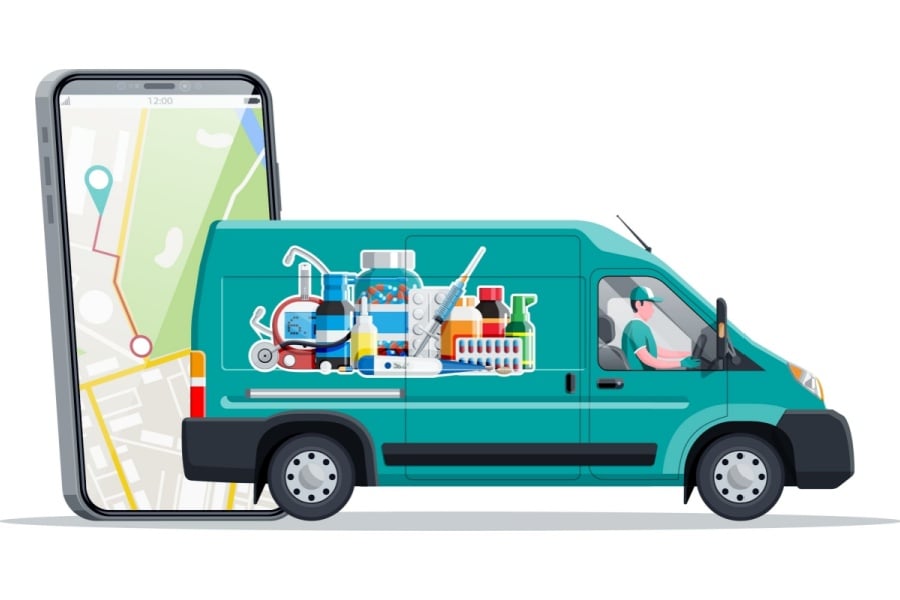Key takeaways:
- Third-party logistics providers can significantly help apparel businesses navigate the challenges of seasonal peaks by offering expertise in inventory management, fulfillment, and technology.
- Advanced technology solutions, such as warehouse management systems and order management systems, are essential for streamlining operations, improving efficiency, and providing a better customer experience.
- Successfully managing seasonal peaks requires a comprehensive approach that includes accurate demand forecasting, optimized inventory management, flexible workforce management, and strong 3PL partnerships.
The apparel industry encounters significant challenges in order fulfillment during seasonal peaks, characterized by an explosion in SKU counts and a diverse array of product sizes coupled with highly volatile demand.
These fluctuations make it imperative to maintain efficient fulfillment operations: Failure to do so can severely impact brand reputation and decrease customer satisfaction. No matter the time of year, consumers expect fast, accurate, and reliable shipping services.
Here, we’ll explore effective strategies to adeptly handle the demands of seasonal peaks in the apparel sector, highlighting the importance of leveraging third-party logistics (3PL) partnerships and cutting-edge e-commerce technology to ensure seamless operations that enhance customer experience and reinforce brand loyalty.
The Nature of Seasonal Peaks in Apparel Fulfillment
In the apparel industry, seasonal peaks are pivotal. Sales surge, driven by specific events or transitions in consumer lifestyle.
As a result, seasonal peaks present opportunities to impress customers with stellar service, build your brand reputation, and maintain recurring business.
Significant Peaks in the Apparel Industry
There are three significant peak seasons for the apparel industry:
- Back-to-school: Typically beginning in late July and running through early September, back-to-school season is a crucial time for apparel retailers, especially those catering to children and young adults. Notably, more than half of consumers will do this shopping online.
- Holiday shopping: Starting on Black Friday through the end of December, this season marks the highest sales across many retail sectors, including apparel. During the holidays, consumers are not only buying gifts but also outfits for holiday parties and family gatherings.
- New fashion seasons: Coinciding with major fashion weeks around the world—usually in February and September—these are when the latest designs hit stores. Consumers are keen to update their wardrobes with the latest trends for the upcoming seasons, driving a significant uptick in sales.
Marketing campaigns designed to draw in shoppers, often including promotions, special offers, and exclusive collections, contribute to these peak sale periods.
Consumers are also driven by social pressure for trendy clothes and holiday gift-giving traditions. Fashion trends, driven by online influencers, play a big part as well.
Unique Challenges of Apparel Fulfillment
Fulfilling orders during peak seasons involves navigating complex issues that are unique to the fast-paced ecosystem of apparel retail:
- SKU count management: Apparel has high SKU counts because of variations in color, size, and style. These already robust counts surge during peak season with specialty apparel, demanding better inventory-level management.
- High return rates: Apparel has an average return rate of more than 20%, per a Coresight Research insight report, higher than any other industry. During peak seasons, the volume of returns can skyrocket, further complicating inventory management and fulfillment.
- Timely delivery: With the rise of omnichannel shopping, consumers may purchase online for in-store pickup, request expedited shipping for last-minute purchases, or shop directly in physical locations. Coordinating these various demands, while maintaining efficient delivery schedules, challenges fulfillment systems.
So, how do you cope?
Essential Strategies to Prepare for Seasonal Peaks
Preparing for seasonal peaks requires a multifaceted strategy to both meet customer demand and maximize profitability.
Accurate Demand Forecasting
Accurate demand forecasting is crucial for an apparel business to ensure customer demands are met without incurring unnecessary costs, but anticipating customer buying behavior can be tricky.
Use historical sales data to gain insights into how different types of apparel have performed in past seasons. This will help identify patterns and trends that may repeat.
In times gone by, general economic conditions provided a weathervane, but paying close attention to other market trends, especially in today’s social media influencer world, is essential. Comb social media to find key influencers and emerging trends.
On the more scientific side, predictive analytics using advanced statistical techniques along with machine learning models can forecast future demand based on factors including past trends, seasonal variations, promotions, and changes in consumer preferences.
When you’re armed with accurate forecasts, you can plan inventory levels, allocate both human and operational resources effectively, and avoid stockouts and overstocks.
Optimized Inventory Management
Now that you’ve forecasted demand, it’s time to optimize inventory. This is key to successfully navigating seasonal peaks.
- Categorize SKUs by demand levels: Arrange SKUs based on your demand forecast into high, medium, and low categories. This prioritizes focus and resources on the SKUs that are likely to drive the most revenue during peak seasons.
- Use just-in-time inventory practices: Adopting just-in-time inventory practices can significantly reduce inventory costs and minimize waste by receiving goods only as they are needed.
- Employ automated inventory management systems: Utilize advanced inventory management software to automate the tracking of inventory levels, reorder points, and lead times.
Flexible Workforce Management
Hiring seasonal employees is usual during peak seasons to help manage the increased workload without the expense and long-term commitment of permanent hires. But how do you get the most out of your workforce?
Conduct cross-training. Training employees to perform multiple roles means you have an even more flexible and dynamic workforce, one that can be allocated where needed as demand shifts in different areas.
Use technology. Workforce management software optimizes scheduling, improves labor forecasting, and ensures that your staff properly for variations in demand. This has the effect of both improving service levels and reducing labor costs.
3PL Partnerships: Their Role in Managing Seasonal Peaks
Selecting the right third-party logistics (3PL) partner with expertise, technology, and reach can transform the challenge of seasonal peaks into a growth opportunity for apparel retailers. The right 3PL is not just a service provider but a strategic partner in your journey toward scalability, profitability, and customer satisfaction.
A reliable 3PL partner plays a pivotal role in managing seasonal peaks due to their capability to quickly and efficiently scale operations in response to fluctuating demand. A seasoned 3PL can handle high SKU counts and manage diverse inventories typical of fashion apparel.
3PLs are adept at navigating the complexities of the logistic processes that accompany increased order volumes and the technology capabilities to make it seamless.
The right partner will have experience in the apparel sector, a distributed network of fulfillment centers and warehouses for efficient shipping, and the latest technology for inventory management, data analytics, and logistics operations.
Leverage 3PL Expertise and Technology
During peak seasons, advanced logistic systems such as warehouse management systems, order management systems, and real-time tracking tools are indispensable. These systems automate tasks, ensure inventory accuracy, and provide crucial visibility into the logistics process essential for swift decision-making during high-demand periods.
Integrating these systems with your existing e-commerce platform streamlines operations significantly.
This meld means a cohesive workflow from order placement to delivery, improving coordination across various touchpoints, reducing errors, and enhancing operational efficiency. Synchronized data across platforms ensures that inventory levels are updated in real-time to avoid stock-outs or overstocks.
Let’s Look at a Hypothetical Case Study
A mid-sized clothing retailer faced substantial challenges during the December holiday season when order volumes doubled. They struggled with delayed shipments, inventory mismanagement, and customer dissatisfaction due to poor order tracking capabilities.
To ease the pain, the retailer partnered with a reliable 3PL known for its robust technology and extensive network in key markets.
This 3PL implemented a cutting-edge inventory management system that provided new accuracy and streamlined operations. In addition, they integrated this system with the retailer’s e-commerce platform for real-time visibility and control.
The results? Order accuracy improved by 98%. Shipping times were cut by 50% due to strategically located fulfillment centers, and real-time order tracking significantly improved customer satisfaction: The company saw a 40% improvement in customer satisfaction (CSAT) scores.
Scaling Apparel Fulfillment Operations With E-commerce Technology
Seamless integration between e-commerce platforms and fulfillment operations helps ensure real-time inventory visibility, accurately track stock levels, and reduce over-selling risks.
Automated order processing speeds up fulfillment times by minimizing manual intervention, decreasing the likelihood of errors and delays. Efficient returns management streamlines the handling of returned goods, offering a better customer experience and maintaining inventory accuracy.
Advanced analytics and artificial intelligence (AI) optimize logistics in apparel fulfillment, enabling smarter order routing based on factors like inventory location, delivery destinations, and shipping costs.
During peak seasons, predictive analytics help forecast demand more accurately, and AI also enhances the customer experience by predicting optimal delivery times and personalizing communication.
Additionally, omnichannel fulfillment is becoming increasingly essential. Strategies like buy online, pick up in-store, and ship-from-store offer customers more convenience. They also help inventory management and reduce delivery times.
During peak periods, these options are particularly valuable as they help distribute the order load across multiple channels, alleviating pressure on traditional shipping methods and facilities.
Moreover, utilizing physical stores as mini-distribution centers can lead to significant reductions in last-mile delivery costs.
How to Build and Maintain Strong 3PL Relationships
Open communication and collaboration with 3PL partners are crucial, especially during peak seasons, to ensure that both parties can effectively manage increased demands and any arising issues.
Focusing on the following areas builds resilient and productive relationships, ensuring a robust supply chain capable of weathering predictable seasonal fluctuations and unexpected challenges.
- Schedule consistent meetings to discuss performance metrics and address any areas of concern. This keeps both parties accountable and aids in the continuous improvement of operations.
- Conduct joint planning sessions to align the goals and expectations of both partners.
- Establish common objectives to ensure that both your business and your 3PL partner are working toward the same outcomes.
Don’t Forget Contingency Planning
Managing risks and having a contingency plan is vital to minimize the impact of unforeseen disruptions.
Work closely with your 3PL to outline steps to be taken in various scenarios, such as delays in the supply chain or unexpected surges in demand. Your joint planning should include alternative actions, additional resource allocations, and communication strategies during crises.
Regularly review and update contingency plans to address new risks or changes in operational requirements. This proactive approach not only helps in managing risks but also ensures that both parties are prepared to act swiftly and efficiently to minimize downtime and preserve service levels.
Future Trends in Apparel Fulfillment
Trends aren’t just for fashion. Paying attention to customer wants and incorporating these trends substantially boosts customer satisfaction and loyalty, positioning your company as both innovative and customer-centric.
Some trends to keep an eye on include:
- Eco-friendly packaging that decreases environmental impacts. Think of paper and compostable foam packaging instead of the classic styrofoam “peanuts.”
- Carbon-neutral shipping. Electric or biofuel delivery vehicles, along with offsetting emissions through renewable energy investments or reforestation projects are popular with consumers.
- Lean inventory practices that reduce waste.
- Automation and robotics in fulfillment to increase speed and accuracy.
- Personalizing the customer experience expands to things such as bespoke packaging, personalized notes, and curated recommendations.
The apparel industry faces significant challenges during seasonal peaks, including high SKU counts, diverse product sizes, and fluctuating demand. Effective strategies to manage these peaks are crucial to maintaining brand reputation and customer satisfaction.
Leveraging partnerships with third-party logistics and utilizing cutting-edge e-commerce technology are indispensable tactics outlined in this article.
These methods not only streamline operations but also enhance customer experience, reinforcing brand loyalty.
With the right preparation and 3PL partnership, apparel retailers can transform seasonal challenges into opportunities for growth and customer engagement, ensuring resilience and profitability in a competitive market.




